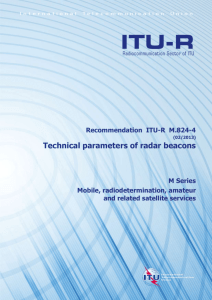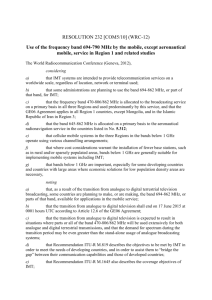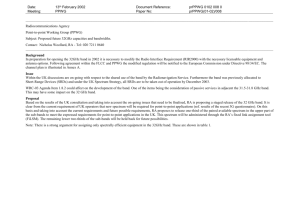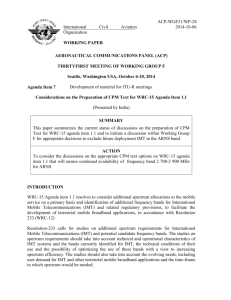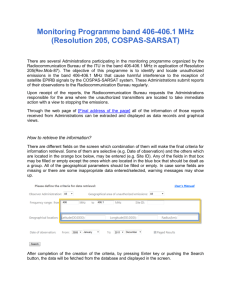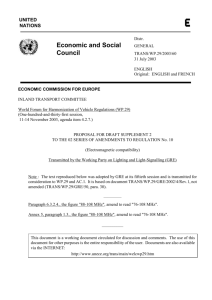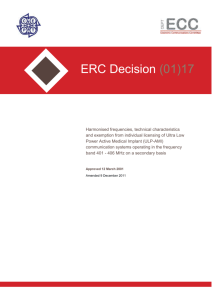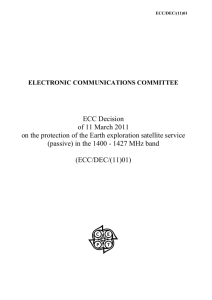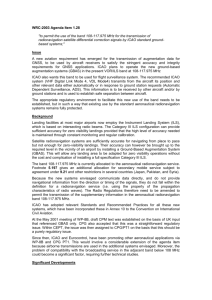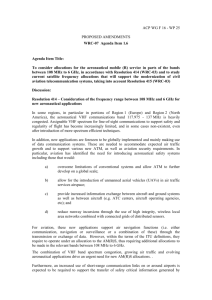Comments on the ICAO position WRC
advertisement
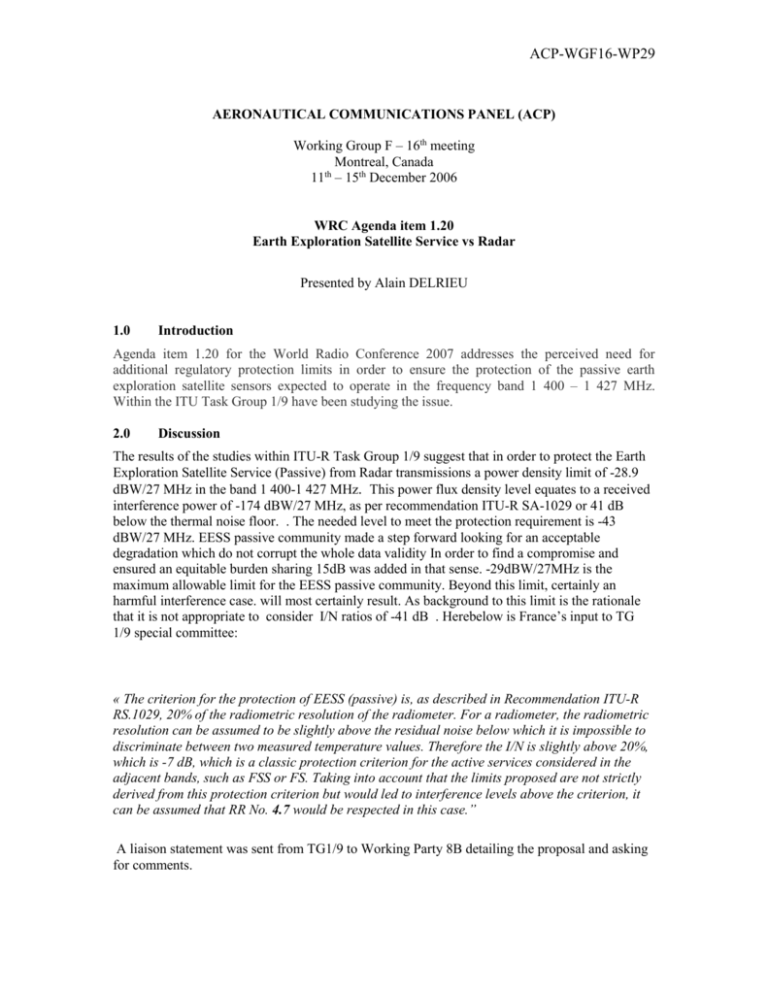
ACP-WGF16-WP29 AERONAUTICAL COMMUNICATIONS PANEL (ACP) Working Group F – 16th meeting Montreal, Canada 11th – 15th December 2006 WRC Agenda item 1.20 Earth Exploration Satellite Service vs Radar Presented by Alain DELRIEU 1.0 Introduction Agenda item 1.20 for the World Radio Conference 2007 addresses the perceived need for additional regulatory protection limits in order to ensure the protection of the passive earth exploration satellite sensors expected to operate in the frequency band 1 400 – 1 427 MHz. Within the ITU Task Group 1/9 have been studying the issue. 2.0 Discussion The results of the studies within ITU-R Task Group 1/9 suggest that in order to protect the Earth Exploration Satellite Service (Passive) from Radar transmissions a power density limit of -28.9 dBW/27 MHz in the band 1 400-1 427 MHz. This power flux density level equates to a received interference power of -174 dBW/27 MHz, as per recommendation ITU-R SA-1029 or 41 dB below the thermal noise floor. . The needed level to meet the protection requirement is -43 dBW/27 MHz. EESS passive community made a step forward looking for an acceptable degradation which do not corrupt the whole data validity In order to find a compromise and ensured an equitable burden sharing 15dB was added in that sense. -29dBW/27MHz is the maximum allowable limit for the EESS passive community. Beyond this limit, certainly an harmful interference case. will most certainly result. As background to this limit is the rationale that it is not appropriate to consider I/N ratios of -41 dB . Herebelow is France’s input to TG 1/9 special committee: « The criterion for the protection of EESS (passive) is, as described in Recommendation ITU-R RS.1029, 20% of the radiometric resolution of the radiometer. For a radiometer, the radiometric resolution can be assumed to be slightly above the residual noise below which it is impossible to discriminate between two measured temperature values. Therefore the I/N is slightly above 20%, which is -7 dB, which is a classic protection criterion for the active services considered in the adjacent bands, such as FSS or FS. Taking into account that the limits proposed are not strictly derived from this protection criterion but would led to interference levels above the criterion, it can be assumed that RR No. 4.7 would be respected in this case.” A liaison statement was sent from TG1/9 to Working Party 8B detailing the proposal and asking for comments. ACP-WGF16-WP29 As a result of the liaison statement from TG1/9 to WP 8B the UK and the USA provided inputs to WP 8B arguing that the proposed limits provided by TG1/9 were neither warranted nor feasible from a radar perspective. It is recognized that this limit value may create some difficulties for few radar with tuning frequency range very close to 1400 MHz.. The American paper arguing that the level of interference experienced by the earth exploration satellite may exceed their required protection limit however due to the number of radar systems deployed the number of measurements that would be affected would be insignificant. The UK paper looked at the link budget taking into account the pulsed nature and rotation of the Radar systems. An additional paper was provided by the UK to Project Team 2 of the Conference Preparatory Group in Europe. The ICAO position states that “Protection of the Earth exploration-satellite service in the band 1 400 – 1 427 MHz should not impose undue constraints to the use of the adjacent bands by aviation”. As can be seen in all four attachments to this paper the Earth Exploration Satellite Service stated protection requirements will impose undue constraints on radars operating in the band 1350 - 1400 MHz and could extend to impose constraints on radars operating with an offset of up to 75 MHz (e.g. operating frequency above 1325 MHz). This statement is disputed by France as it is is based on a flow chart stroked out from TG1/9 compatibility study. Whilst the ICAO position covers the issue, now that the protection requirements for Earth Exploration Satellite Service are now know (?) the position could be expanded to give a little more detail at the next update to the position 3.0 Action Members of the meeting are invited to note the information provide and take the appropriate action within their own States to highlight the issue and defend the rights of the radar community. That the ICAO position on Agenda item 1.20 be updated as shown below when the overall document is next reviewed and updated. Agenda Item Title: To consider the results of studies and proposals for regulatory measures, if appropriate, regarding the Earth exploration-satellite service (passive) from unwanted emissions of active services in accordance with Resolution 738 (WRC-03) Discussion: The Earth exploration-satellite service (passive) operates in the frequency band 1 400 – 1 427 MHz and is seeking protection from active services in the adjacent bands. Work carried out in ITU-R Task Group 1/9 has determined that a Radar adjacent band power flux density of -28.9 dBW/27 MHz would be required to protect the Earth Exploration-Satellite Service. Of concern to aviation is that the band below 1 400 MHz is used by the aeronautical radionavigation service (radar) through Nos. 5.334 and 5.338 and their operations should not be unduly constrained. The technical studies have shown that current radars conforming to the relevant ITU-R recommendations will not meet the regulatory limits proposed by the Earth Exploration-Satellite Service. ACP-WGF16-WP29 The use of the band 1 429 – 1 535 MHz for aeronautical telemetry is regulated through Nos. 5.342 and 5.343 for aeronautical telemetry and this usage should not be adversely affected by the wish to improve protection to the Earth exploration-satellite service. ICAO Position: Protection of the Earth exploration-satellite service in the band 1 400 – 1 427 MHz should not impose undue constraints to the use of the adjacent bands by aviation. ACP-WGF16-WP29


